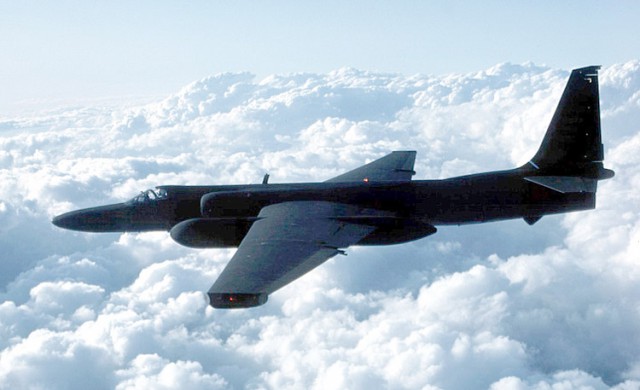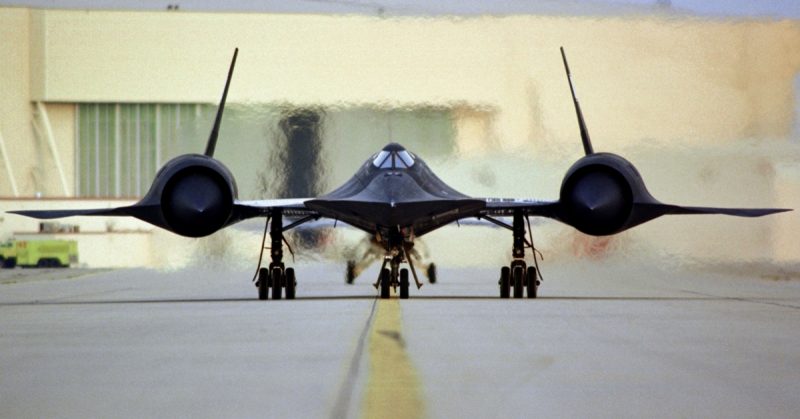The Lockheed U-2 and SR-71 ‘Blackbird’ are two planes about which there is not a lot known. Here we will learn some facts about them.
The Lockheed U-2
The Lockheed U-2 also known as the “Dragon Lady” is a high altitude recon aircraft that was built in 1957 to gather a range of information while cruising at undetectable high altitudes. This is a single jet engine plane and can fly ultra-high. It is used to gather all-weather intelligence. It’s operated by the United States Airforce and also by the CIA; it can provide information from 70,000 feet all day and night which is perfect for gathering information. It has a surface ceiling of 70,000 feet and can be equipped with a variety of sensory and communications systems for spying purposes. It is because of its robustness and reliability that, to this day, the U-2 is still in service.
The end of World War II kicked off the Cold War, and America was in dire need of an aircraft that could transmit back accurate information about Soviets plans & projects. This was a time when satellites & geo-positioning were still far from perfected, and Soviet air defenses made it impossible for traditional recon/bomber planes like the B-52 to carry out these activities.
In the end, it was the CIA that pushed for the creation of the U-2. The Lockheed proposal for the recon plane was approved and from 1957 onwards, the plane was in action over enemy territory.
The U-2 held a tactical advantage over Soviet jets since Russia was yet to build an aircraft capable of reaching the same heights. In addition to this, the US also believed that the Soviets were far away from developing any missile system capable of bringing down a U-2.
The Lockheed is one of only a few aircraft that have been in service to the United States Air Force for over 50 years. The U-2’s development started in 1954.
The CIA had the main control of the U-2 (under the code name Project Dragon Lady), although eventually the Navy and the United States Air Force eventually got to utilize it also. The Air Force bought 31 U-2s from the CIA as they were so impressed with the craft, following their use of it when borrowing it from the CIA.

The SR-71 ‘Blackbird’
For its time, the Blackbird was an advanced aircraft; its technology was outstanding compared to other crafts in use at the time. It broke most aviation records, flew beautifully when on missions and became truly famous.
The Blackbird’s airframe consisted of a titanium alloy (ninety-three percent) which let the craft operate in varying temperatures. The canopy on the cockpit was made using heat-resistant glass and could withstand temperatures up to 640 degrees Fahrenheit.
A lot of new technology was used throughout the Blackbird’s design – it needed newly developed materials (fuel, wiring, lubricants, sealants and other components) to help it to withstand very high temperatures caused by friction when sustaining Mach 3 flight.
Imagine a plane that could travel at three times the speed of sound. That’s 1,030 meters every second or 1.03 kilometers (.65 miles)! The United States Air Force developed just such an aircraft. It needed no defenses against a missile, because it only needed to outrun it!
This plane was the SR-71 Blackbird. It was a reconnaissance aircraft, designed to spy on enemy territory. Flying at three times the speed of sound and at an altitude of 80,000 feet (24,384 meters), it was practically undetectable.
The SR-71 Blackbird was used from 1964 – 1999 and 32 were built. 12 were lost, but none were destroyed by enemy forces. They served an important role, gathering information during the Vietnam War. The North Vietnamese fired about 800 surface-to-air missiles at them, but none found their targets.
When the Blackbird was decommissioned, it had flown 11,008 on 17,300 missions. In total, it flew 53,490 hours. It spent 11,675 hours traveling at three times the speed of sound.
When the Air Force announced its intention to retire the SR-71 in 1990, Lt. Col. Raymond E. Yeilding and Lt. Col. Joseph T. Vida set out to break four new speed records on its final flight. They flew from Los Angeles to Washington D.C., Kansas City to Washington D.C., St Louis to Cincinnati, and from the west coast of the United States to the east. In the last flight, they flew at an average speed of 2,404 miles (3,869 kilometers) in 67 minutes and 54 seconds.
In 1995 the SR-71 was brought back into service. In October 1999 it made its last flight before being retired for good. Some Blackbirds are preserved in museums.
